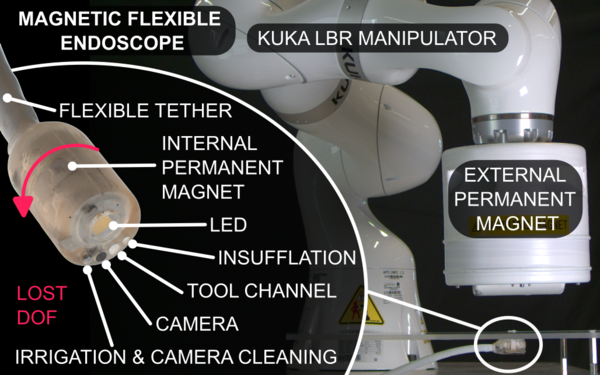Robots can now crawl into your body and detect cancer |

Invasive biopsies may soon become a thing of the past because robots will take over that job. Instead of removing tissues via surgery, these robots could crawl into your body and scan for cancers. Even though it seems like a scene from a science fiction movie, it’s not. Scientists have developed micro-robots that can provide doctors with virtual 3D scans to detect cancer.

The micro robots designed by a collaboration between engineers, scientists, and clinicians from the University of Leeds, the University of Glasgow, and the University of Edinburgh, could eliminate the need for traditional biopsies and provide detailed imaging of tissues in real-time. The breakthrough published in Science Robotics, is the first successful use of a magnetically controlled robot to generate high-resolution ultrasound images inside the gastrointestinal tract. This device called the oloid magnetic endoscope (OME), measures just 21 mm in diameter, about the size of a British 1p coin, and could replace traditional biopsies, which often take weeks to process. The technology could be instrumental to detect, stage, and potentially treat colorectal cancer in a single non-invasive procedure.

“For the first time, this research enables us to reconstruct a 3D ultrasound image taken from a probe deep inside the gut – something that has never been done before. This approach enables in-situ tissue analysis and diagnosis of colorectal cancer, with immediate results. The process of diagnosing colorectal cancer currently requires a tissue sample to be removed, then sent to a lab, with results taking from one to three weeks,” Pietro Valdastri, Professor and Chair in Robotics and Autonomous Systems and Director of the STORM Lab said in a statement.

While 3D ultrasound can already be performed in blood vessels and in the rectum, these mini-robots work opens the possibility for 3D scans to be performed deeper in the gastrointestinal tract.
“By combining our advanced robotics with medical ultrasound imaging, we take this innovation one step ahead of traditional colonoscopy, allowing doctors to diagnose and treat in a single procedure — eliminating the wait between diagnosis and intervention. This not only makes the process more comfortable for patients but also reduces waiting times, minimises repeat procedures, and alleviates the anxiety of waiting for potential cancer results,” Postgraduate researcher Nikita Greenidge, a member of Leeds’ STORM Lab, in the School of Electronic and Electrical Engineering, and lead author of the paper said.
“Colorectal cancer is one of the leading causes of cancer-related deaths in the UK and globally, but if detected early it is highly treatable. This research presents a new approach that could significantly improve early diagnosis with a minimally invasive approach and could also, in the future, facilitate targeted ultrasound-triggered drug delivery for more effective treatment,” she added.
Talking about the safety of the micro-robots, Professor Sandy Cochran, at the Centre for Medical and Industrial Ultrasonics at the University of Glasgow, who led the ultrasound component of the study, said, “Ultrasound imaging is safe, inexpensive, and can be deployed exactly where it’s needed. Through this collaborative approach, linking medical ultrasound imaging and cutting-edge robotics, we hope to help bring about transformative changes in cancer diagnosis, treatment, and patient management.”
With colorectal cancer becoming a global health priority, this new breakthrough could redefine how doctors diagnose and fight, the disease.
(Pic courtesy: STORM Lab, University of Leeds)








